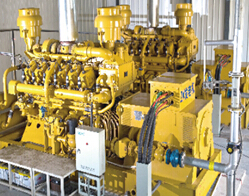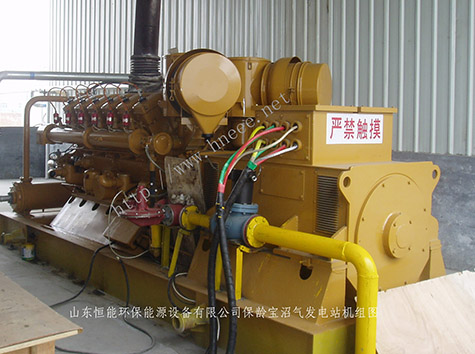煤矿瓦斯分高浓度瓦斯和低浓度瓦斯的区别!
煤矿瓦斯分高浓度瓦斯和低浓度瓦斯,高浓度瓦斯是指瓦斯浓度大于30%的瓦斯,低浓度瓦斯是指瓦斯浓度低于30%的瓦斯。我国 60%以上的瓦斯是含甲
Coal mine gas is divided into high concentration gas and low concentration gas. High concentration gas refers to gas with a gas concentration greater than 30%, while low concentration gas refers to gas with a gas concentration lower than 30%. More than 60% of the gas in China contains A
烷30%以下的低浓度瓦斯,按煤矿安全规程要求,瓦斯浓度在30%以下的就不能贮存和输送,更谈不上利用了。
Low concentration gas with an alkane content below 30% cannot be stored and transported, let alone utilized, according to coal mine safety regulations.
低浓度瓦斯发电需要解决2个问题,一是各个煤矿的本身不一样,而且随时都在变化,传统的发电机组很难“以不变应万变”;二是低浓度瓦斯的安全输
Low concentration gas power generation needs to solve two problems: firstly, each coal mine itself is different and constantly changing, making it difficult for traditional power generation units to "adapt to changes with immutability"; The second is the safe transportation of low concentration gas


送问题.济柴低浓度瓦斯发电机组采用电控燃气混合器技术,可以自动控制空燃比,以适应瓦斯的浓度变化,同时,低浓度瓦斯安全输送技术,采用细水雾及多重阻火技术,解决了低浓度瓦斯的地面安全输送问题。
Delivery issues. The Jichai low concentration gas generator unit adopts electronic control gas mixer technology, which can automatically control the air fuel ratio to adapt to changes in gas concentration. At the same time, the low concentration gas safety transportation technology adopts fine water mist and multiple fire resistance technologies, solving the problem of ground safety transportation of low concentration gas.
瓦斯用于内燃机发电作出了抽采的瓦斯浓度低于30%时,不得作为燃气直接燃烧;用于内燃机发电或作其他用途时,瓦斯的利用、输送必须按
When gas is used for internal combustion engine power generation and the concentration of extracted gas is less than 30%, it shall not be directly burned as gas; When used for internal combustion engine power generation or other purposes, the utilization and transportation of gas must comply with
有关标准的规定,并制定安全技术措施。这给低浓度瓦斯发电提供了制度保障。
Provisions on relevant standards and development of safety technical measures. This provides institutional guarantees for low concentration gas power generation.
上一篇:天然气与燃气发电机组有什么关系?
下一篇:柴油发电机组尾气的余热利用介绍
 在线咨询
在线咨询 官方二维码
官方二维码




 当前位置:
当前位置: 2023.11.22
2023.11.22






